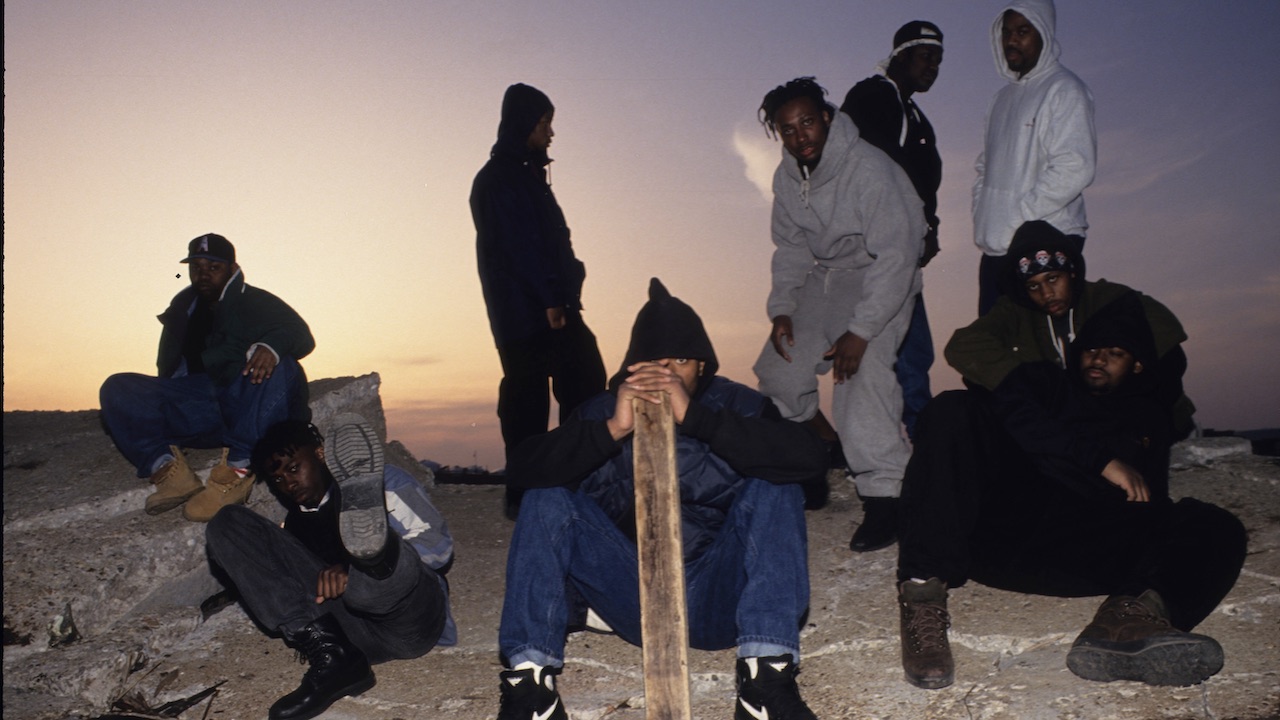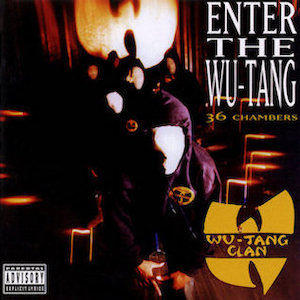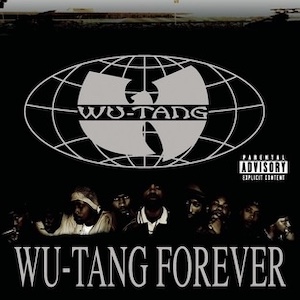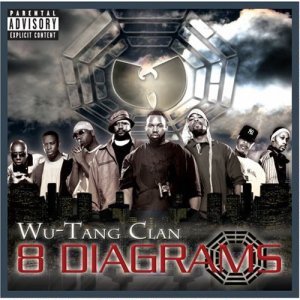A beginner's guide to Wu-Tang Clan, one of hip hop's most unique, innovative, wildly creative and untameable powerhouses
Wu-Tang Clan ain’t nothing to f’ wit, and here's why

There aren’t many collectives in the history of hip hop as iconic and infamous as Staten Island, New York’s Wu-Tang Clan. Since their formation in 1992, the story of Wu-Tang has been a truly fascinating one: one of the most instantly recognisable logos ever, video games, clothing lines, prison, death and the creation of the most expensively purchased album of all time (bought by some kind of cosplay Bond villain...then confiscated by the US government) all feed into their mythos. Trivia fans please note: they're also the first hip hop artists to have their own Vegas residency.
Most importantly though, Wu-Tang are responsible for introducing us to some of the most famous and revered names in the genre. Inspired by classic soul, the dangerous underbelly of New York, and '70’s kung-fu movies, the group have created some of the most unique, idiosyncratic and legendary works in rap history.
Here is our guide to their best work. Apart from Once Upon in Shaolin... because it's not like any of us can go out and purchase the only copy of that in existence, is it?

Enter the Wu-Tang (36 Chambers) (1993)

One of the finest debut albums ever made, a legitimate classic, the greatest release in the history of hip hop. These and many other accolades have been bestowed upon Enter the Wu-Tang..., and it’s worthy of them all. Back in 1993 there really had never been anything like this, and no one quite like Wu-Tang Clan.
Recorded on a tiny budget in the cramped confines of the Firehouse studio in Brooklyn, it’s dark, angry, disorientating, and full of violent imagery, with a variety of distinct and original voices and a gritty production style that went on to influence rap's sonic direction and usher in a new era in the process. And it still sounds every bit as thrilling and terrifying as it did when it dropped over 30 years ago.
Picking highlights on such a perfect album seems futile, but Wu-Tang Clan Ain’t Nothing to F’ Wit, C.R.E.A.M. and Protect Ya Neck are among the most genre-defining songs in hip hop history. Essential listening.
Wu-Tang Forever (1997)

Waiting four years before releasing the follow- up to one of the most important albums in a genre's history meant that Wu-Tang Forever had some serious pressure on it to succeed. Looking back, maybe making a patience-testing double album that deliberately expanded and smoothed out the harsh, minimalist sound of ...(36 Chambers) wasn’t the smartest idea.
The latest news, features and interviews direct to your inbox, from the global home of alternative music.
Wu-Tang Forever certainly divided their audience, but decades down the line, you have to admire RZA’s pioneering production techniques, and there are unquestionably some gems in here as well. Inspectah Deck gets plenty of credit for his performance on Triumph, but he’s arguably even better on The City, and the likes of For Heaven's Sake and As High as Wu-Tang Get (featuring a typically unhinged Ol’ Dirty Bastard performance) are all time bangers.
That said, the criticisms of it being too clean and way too long, are entirely fair.
The W (2000)

Three years down the line, following the relesase of critically adored solo albums from several members, The W certainly felt more like what fans wanted and expected.
It doesn’t completely throw out the smoother edges introduced on Wu-Tang Forever (check out the dancehall meets Bond theme splendour of One Blood Under W or a crooning Isaac Hayes turning up on the soaring soul of I Can’t Go to Sleep), but it certainly hits harder. The threatening, stalking rhythms of Careful (Click Click), the jittering beats of Redbull, ODB’s stoned, slurred drawl on Conditioner, all of them sound like Wu-Tang at their best. It also features what is arguably their biggest crossover hit, the sublime, floor-filling Gravel Pit.
Iron Flag (2001)

Wu-Tang's star was fading by the time their fourth album was released in 2001. Iron Flag lacks contributions from significant members such as Ol’ Dirty Bastard and Cappadonna, it peaked at a disappointing 32 on the US Billboard 200 chart and Sony would dissolve the band’s label Loud Records a year after its release.
A tough time then, but musically Iron Flag isn’t the disaster it might seem on paper. Leaning into classic funk and the more electronic elements that RZA had been exploring under his Bobby Digital pseudonym, tracks like the funky Chrome Wheels, the classic blaxploitation of Uzi (Pink Ring) and the Sly Stone-aping Soul Power (featuring a manic guest spot from Public Enemy’s Flava Flav) are all fantastic. Not everything works, but Iron Flag is worth revisiting.
8 Diagrams (2007)

Following the death of ODB in 2004 and the perceived failure of Iron Flag, Wu-Tang laid low for a few years. When they returned with 8 Diagrams, hip hop had changed significantly.
Clearly turned off by the pop influence on the genre, Wu-Tang were inspired to kick back against commercial rap, head back to their roots and make their darkest and most intense album since ...(36 Chambers).
Opener Campfire sets their intention out immediately with a pitch black, snarling piece of street-level thuggery, followed by the guitar-driven Take it Back, featuring an all-timer of a verse from Raekwon. It’s a breathless start, and 8 Diagrams never really drops from there; George Clinton elevates Wolves with his filthy funk, Unpredictable is a glorious old-school homage to '80s rap and Rushing Elephants sounds like the everyone piling into the vocal booth and fighting it out in the most thrilling way.
A superb mid-career renaissance, and the clear silver medal in their discography.
A Better Tomorrow (2014)

The creation of A Better Tomorrow was marred by a public spat about the album’s direction by RZA and Raekwon, but there was also excitement from fans at the news that unused verses by ODB would be included on the record.
Sadly, it all resulted in A Better Tomorrow being something of a mixed bag. Opening track Rukus in B Minor is a tremendous way to kick things off, sounding like a bolder and more mature version of classic Wu-Tang. Unfortunately, the desire for a more contained and low energy sound misses the target on the uninspired and tired sounding 40th Street Black/We Will Fight and Hold the Healer. Although nothing really leaps out as being embarrassingly bad, the manic energy and danger that personified Wu-Tang Clan in their early years is massively lacking throughout.
A year later they’d sell the sole copy of ABT’s follow up, Once Upon a Time in Shaolin, to businessman/crook Martin Shkreli for a reported $2m. So, unless you’re a billionaire, this album is the final Wu-Tang music you’ll have heard. Shame, as this is no way to go out.

Stephen joined the Louder team as a co-host of the Metal Hammer Podcast in late 2011, eventually becoming a regular contributor to the magazine. He has since written hundreds of articles for Metal Hammer, Classic Rock and Louder, specialising in punk, hardcore and 90s metal. He also presents the Trve. Cvlt. Pop! podcast with Gaz Jones and makes regular appearances on the Bangers And Most podcast.





